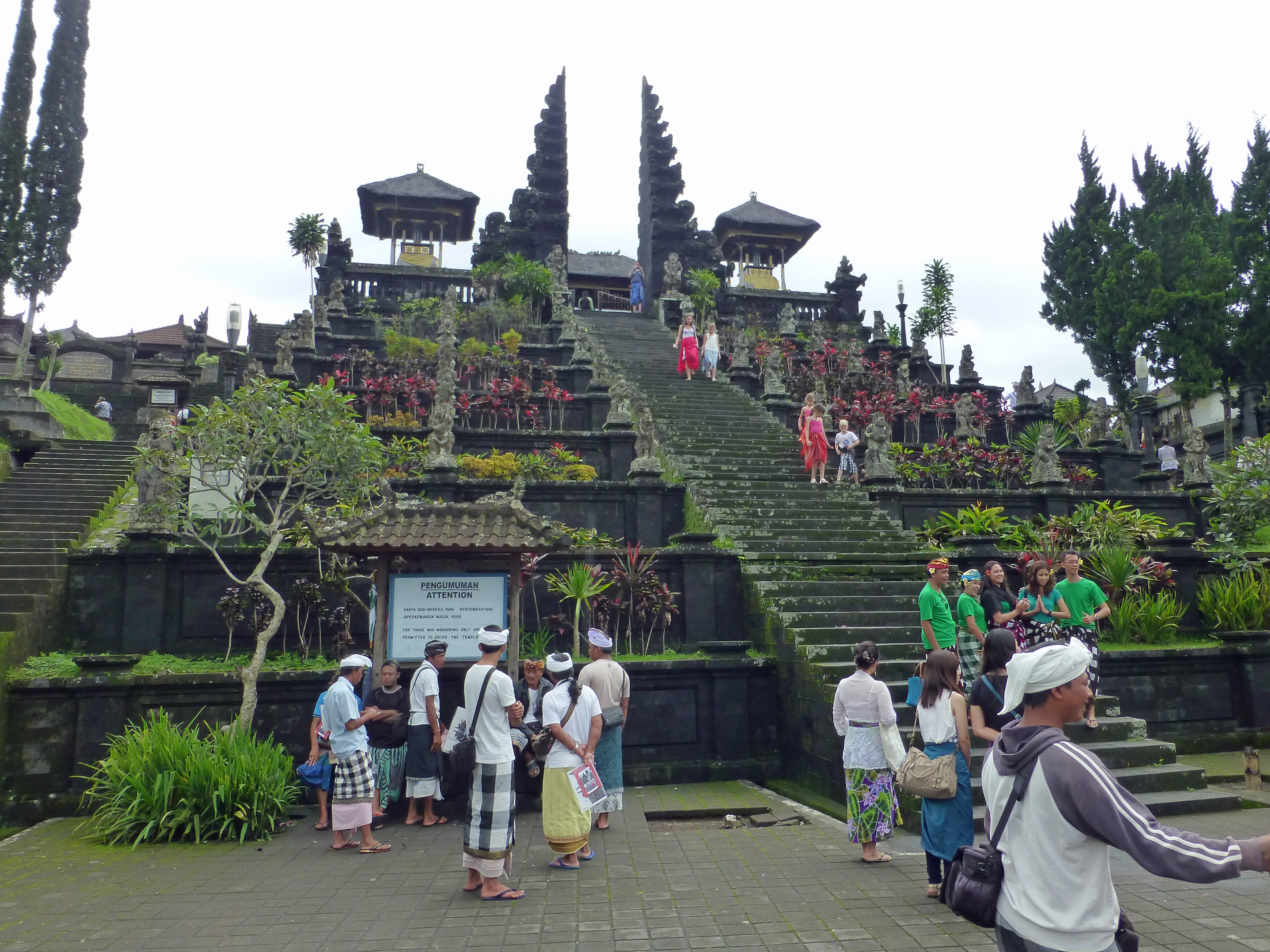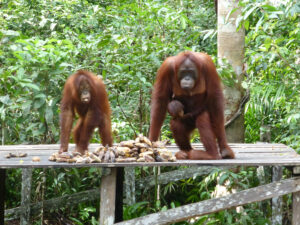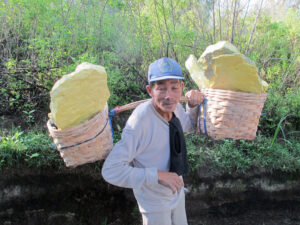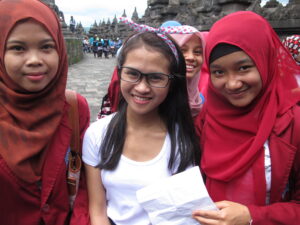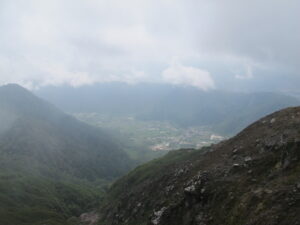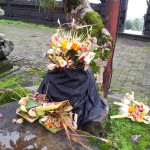
Across Indonesia, there are hundreds of distinct ethnicities, languages and native cultures. For some of these, the old tribal religions remain. Most have been subsumed into the three major religions found here – Islam, Christianity and Hinduism, each of which has adapted to local customs and tribal practices.
Indonesia is primarily Muslim, but the principal religion varies by island as well. Flores and Sumatra are heavily Christian, for example. Bali has long been predominantly Hindu.
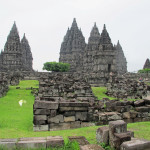
That oddity goes back nearly two centuries when Indian traders came to live on Java, and eventually displaced local tribes. Volcanic eruptions in the first millennium pushed the Hindu people from western Java to the east. That’s where the ancient temples of Prambanan and Borobudur still stand, built in a style quite close to the oldest stone temples of ancient India. Eventually the Hindu tribes made the short hop over to Bali where they intermingled with the ethnically and linguistically distinct Balinese people. By 800AD, they dominated that island.
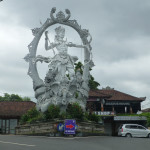
In common with the Hindus back in India, the Balinese Hindus brought to Bali a passionate dedication to worship. The Bali Hindus celebrate the trinity of Hindu deities, Shiva, Brahma and Vishnu – as well as the favorites like elephant-headed Ganesa or colorful Sri Jagannath, whose images and shrines can be found here. They venerate through sculpture or re-enact in dance mythic tales of Hinduism like the Ramayana.
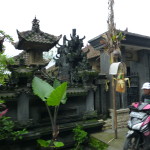
Even small villages cluster around a few sizable temple complexes, or puras, with multiple towers and shrines at which to worship. Nearly every house in the farming villages seems to have a separate yard space up to 50 to 100 sq meters in which the villagers jam a half-dozen shrines. One local man outlined the traditional social rules covering villagers’ degree of commitment to the temples, from prayer and rituals to support.
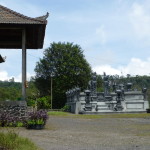
And that fervor for active worship to maintain favor with the gods is evident across the island. We saw many pilgrims dressed in white garments and topped by traditional cylindrical hats jamming the ferry boats to visit one of the earliest temples in Bali, on the island of Menjanggan.
Balinese culture seems to have contributed new elements to Hindu worship, including an array of gods important to them. Festivals differ too. We happened to be in Bali at year’s end, during the most important of these festivals: the welcoming of the gods back to the island for 10 days. A good welcoming portends a good year ahead. For days in advance of the start (Galungan – in 2014, on December 17), Hindus prepare traditional foods, deck themselves in special clothing and adorn their homes with elaborate decorations.
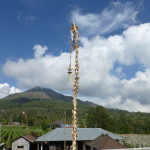
At every house, long strands of bamboo (penjor), folded like origami into elaborate shapes, arch over the street. Villagers stack bamboo trays of flowers and incense on all the shrines, and ceremoniously dress statues of gods and attendants in sarongs, the respectful way for all to dress at the temples. Then for ten days, all perform prescribed poojas or ceremonies, culminating with the day celebrants hail the return of the gods to heaven (Kulungan).
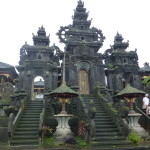
The temple complexes themselves are reminiscent of the older Hindu temples in India, but evolved a very different architectural style, presumably adjusting to Balinese designs. The pavilions within the enclosing walls of a temple feature sloping red-tile or thatched roofs. The elaborate stone gates and shrines are often more rectilinear, somewhat like moderne décor, or overtly South Pacific/Chinese in appearance. Towers seem to imitate Chinese pagodas.
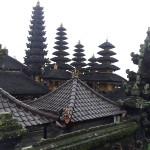
The most important of all of these on Bali is the Mother Temple of Besakih, a huge collection of nearly two dozen temple complexes, each of which offers the typical courtyard space for the devout to gather, as well as multiple shrines where the devout pray and do religious rituals. Besakih was built on the lower slopes of volcanic Mt Agung, an especially holy place as it is the highest mountain on the island, closest to the gods and towering over Bali’s eastern section and its shores.
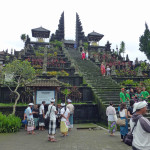
At the main temple of Besakih, Pura Penataran Agung, a steep set of steps ascending seven levels of broad terraces brings you to a huge courtyard and seemingly innumerable shrines. Only worshippers may enter. Ascending these levels makes for a symbolic start to your journey toward heavenly Mt. Meru, for which Agung is a capable stand-in. On the festival day of Kulungan, thousands of pilgrims ascended and descended the stairs carrying flowers, bamboo pots, food and other offerings to give thanks to the gods for their blessings. Even on a relatively quiet day, as one might expect in religiously intense Bali, many devout make their colorful way to the temples.
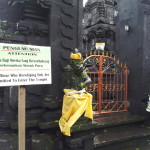
We made the ascent up the levels, but were barred from the inner courtyard even wearing the obligatory sarong. Instead we were able to explore some of the other temple complexes up the hill, smaller versions of the main one and unused by worshipers on a quiet day.
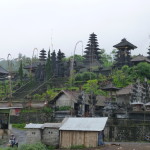
It was misty and raining at times, heightening the contrast between the dark grey stone carvings and the colorful decorations for the festival. We entered the temple courtyards thru sculpted gates, one of which was like a sideways gaping mouth. Each complex was a smaller version of the central temple.
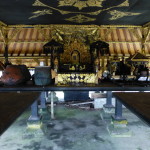
Though the commitment of Hindus on Bali to their religion is evident, their passion is not alone in pluralistic Indonesia. Mosques abound on the other islands, with calls to prayer throughout the day. Shopkeepers close during the most important prayer times. Mid-day on Friday, which is particularly holy, government and corporate offices close to allow for prayer.
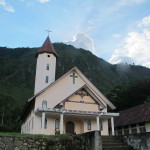
Where Christianity predominates, as on Flores and Sumatra, two or more churches are available in even modest-sized villages. And the services go on for hours.
Such passionate piety, can in other countries like even pluralistic India, lead to division between the religions. Indonesia is not immune to this evil, but its people seemed to us as tolerant of others as they are devoted to practicing their faith. Amen to that!
(Also, for more pictures from Indonesia, CLICK HERE to view the slideshow at the end of the Indonesia itinerary page.)


